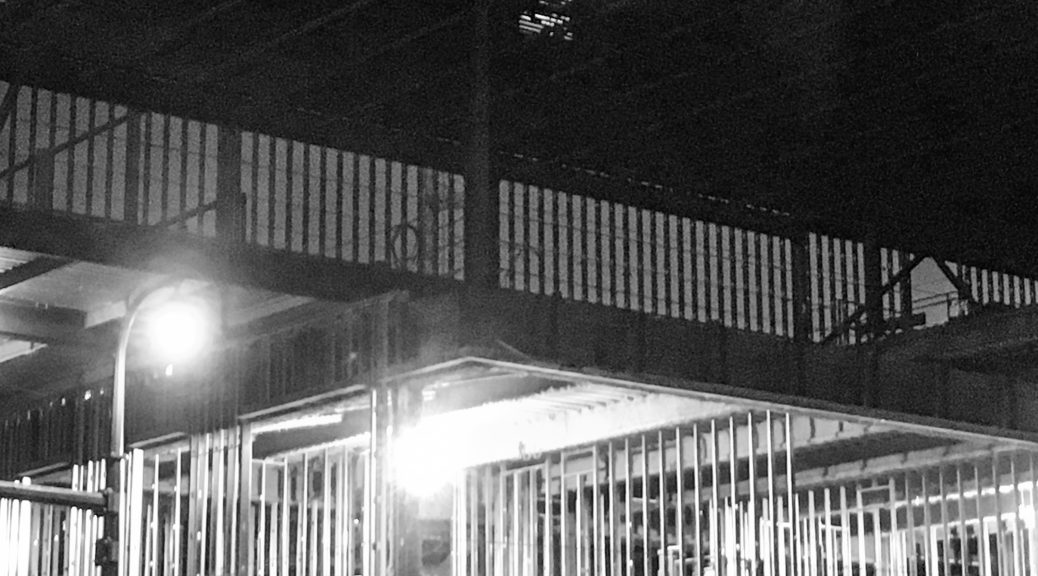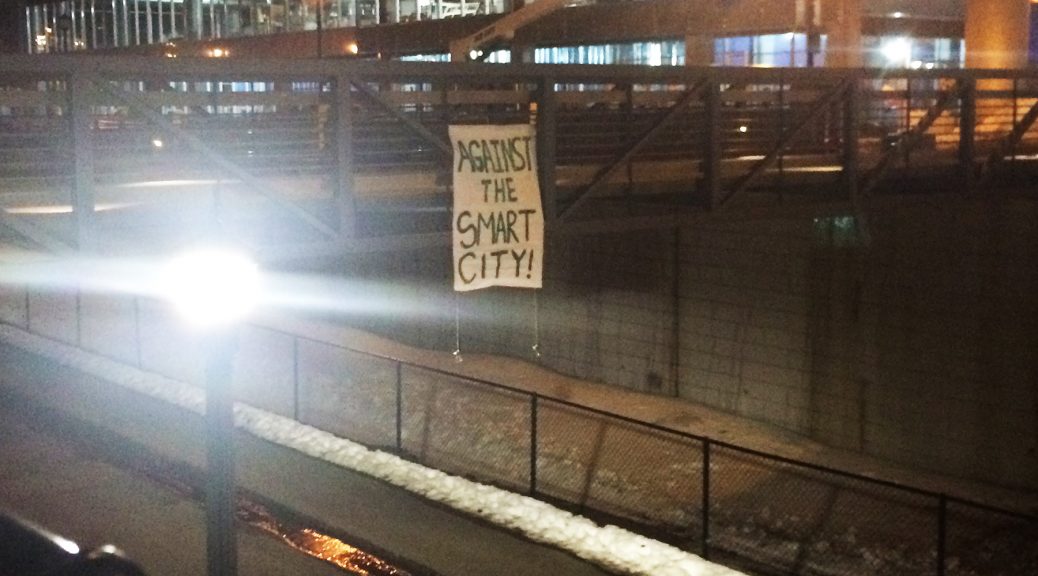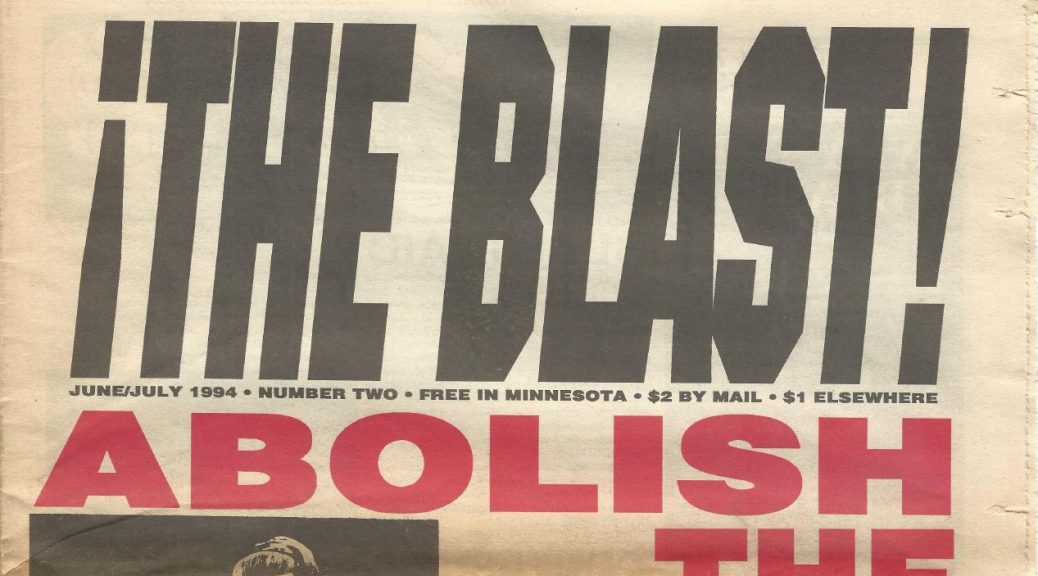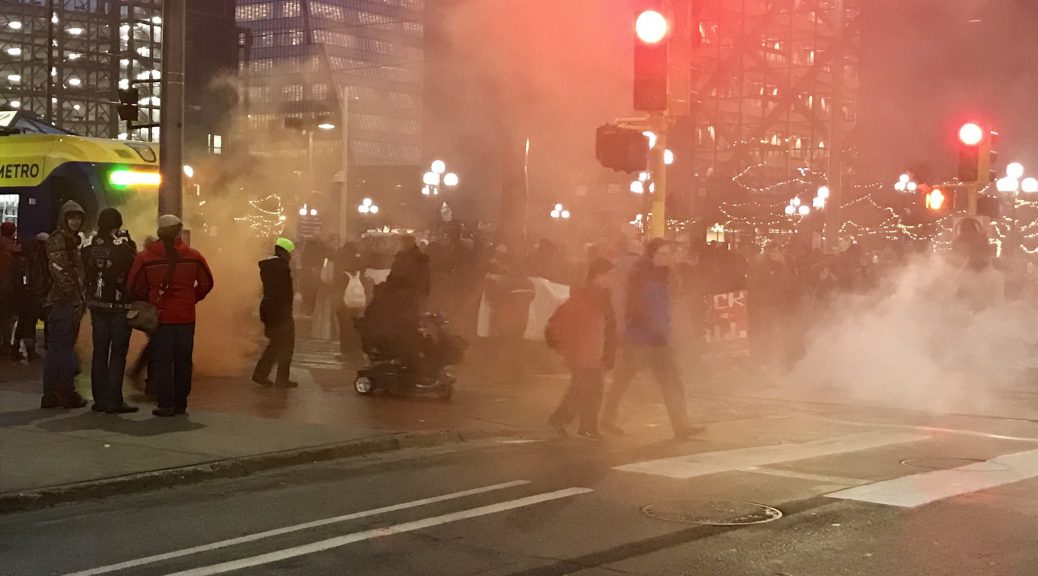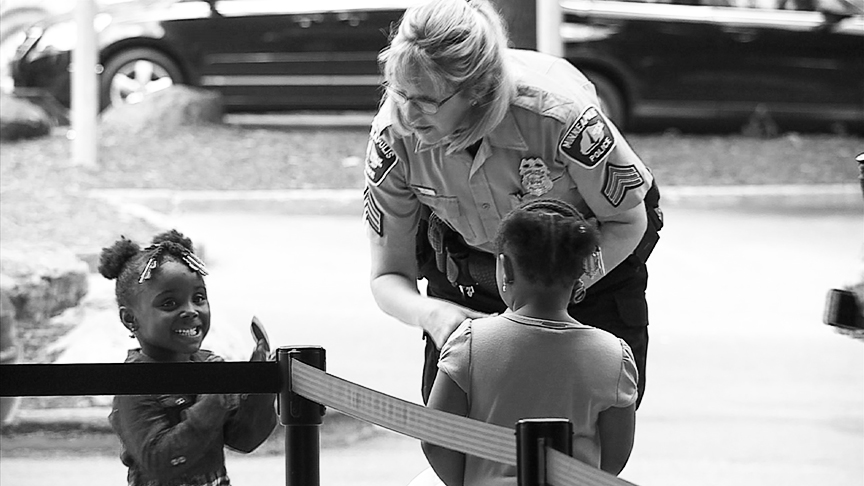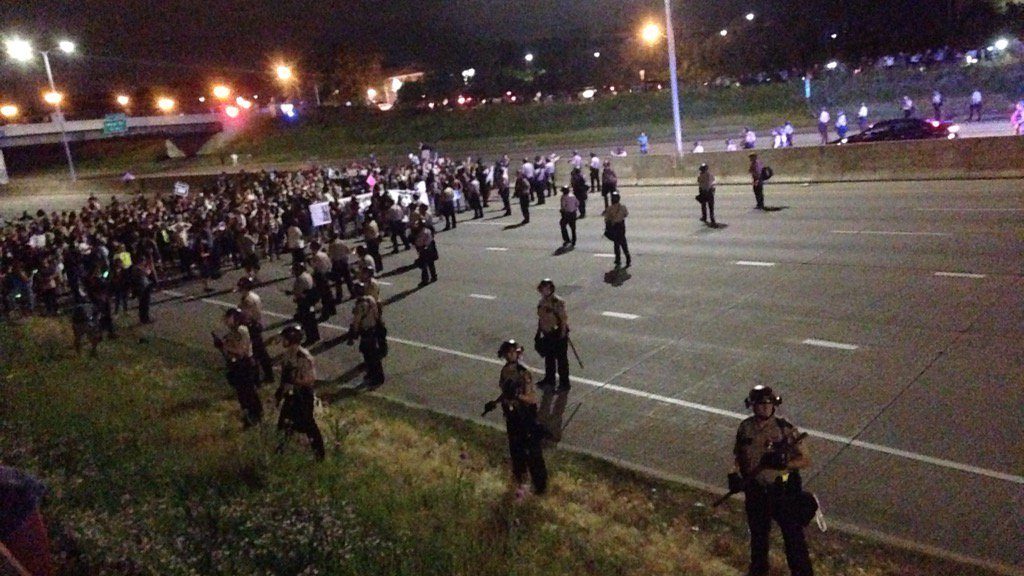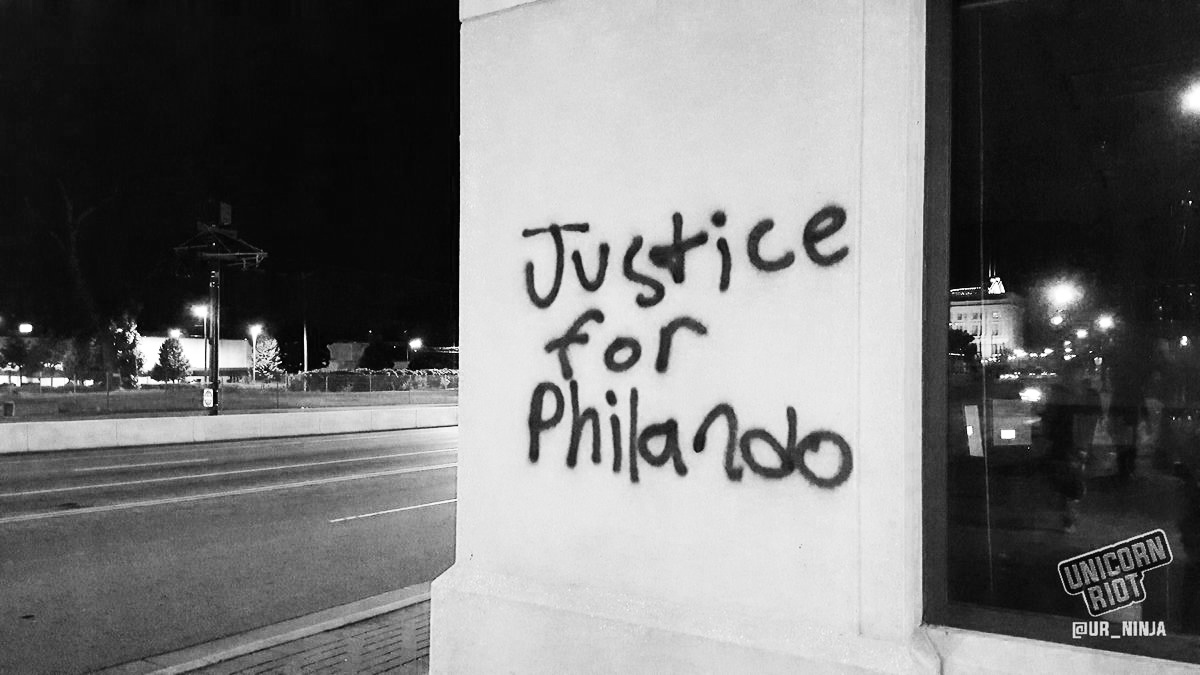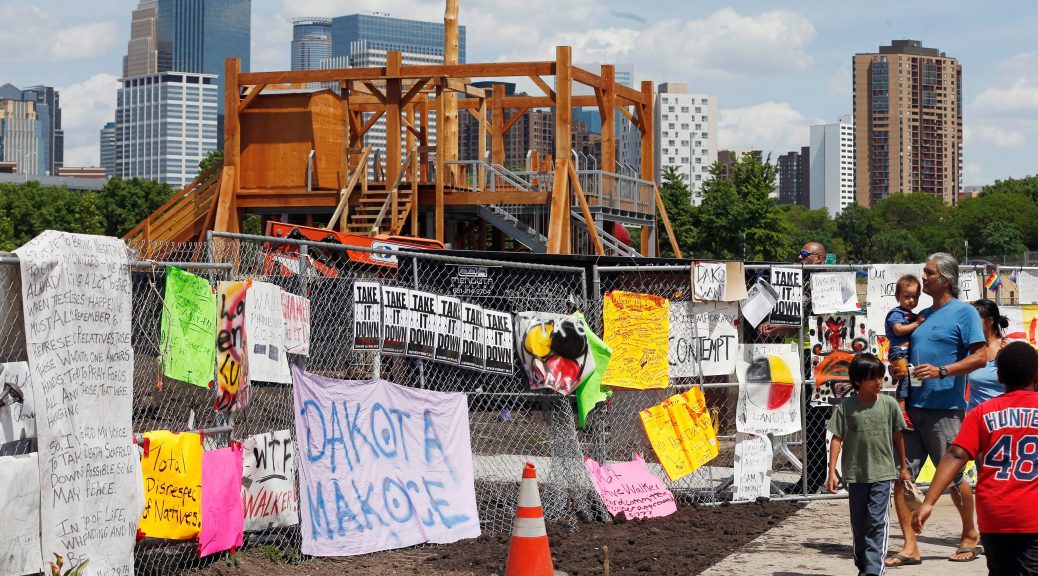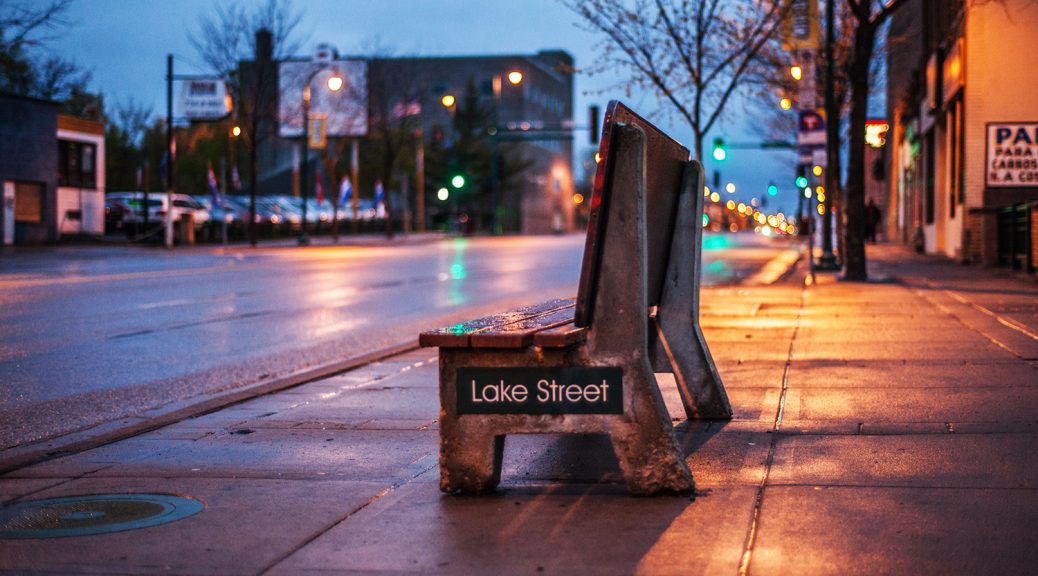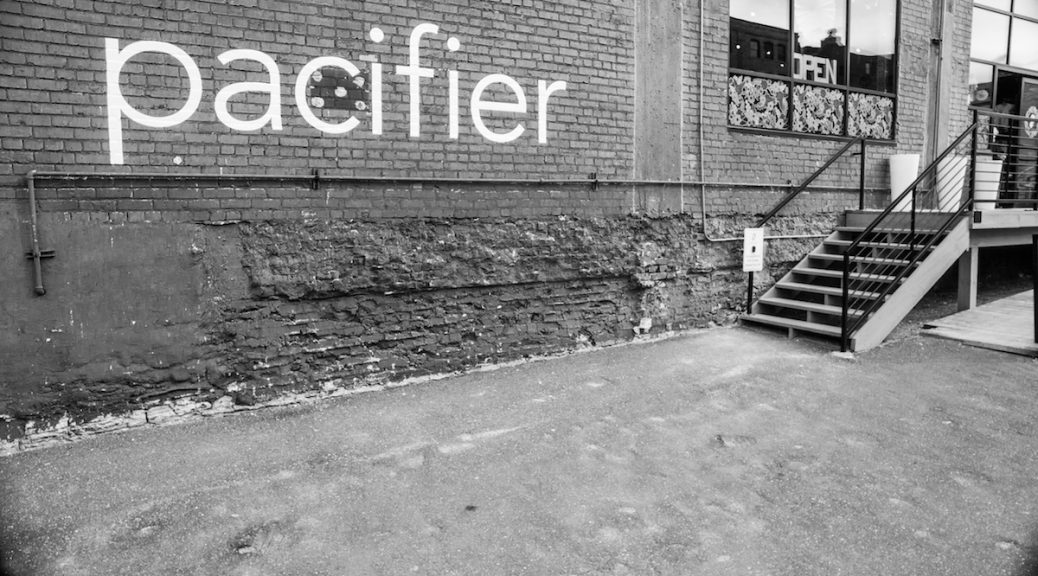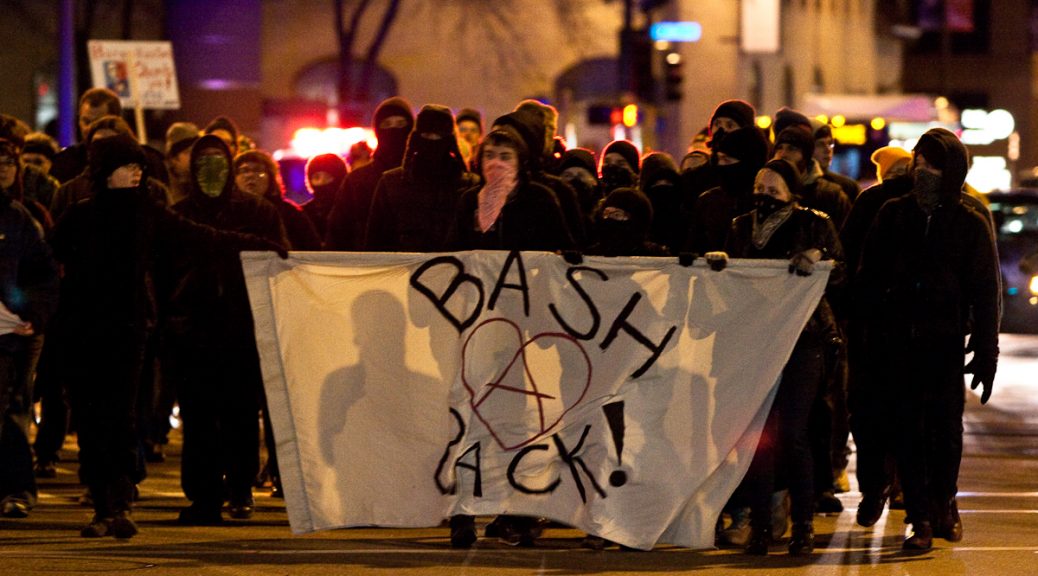[Pamphlet version]
The following is the full interview with a former member of Bash Back! Twin Cities. An abridged version was published in issue 6.
Can you give a brief overview of what Bash Back was nationally?
Bash Back! was a queer anarchist network with “chapters” in various cities across North America that existed from 2007-2010. It was initially founded for the explicit purpose of mobilizing queer anarchist blocs for the DNC and RNC, but ended up expanding and serving other purposes as well. Anyone who wanted to could form a chapter in their town, provided they agreed to the 4 points of unity:
- Fight for liberation. Nothing more, nothing less. State recognition in the form of oppressive institutions such as marriage and militarism are not steps toward liberation but rather towards heteronormative assimilation.
- A rejection of capitalism, imperialism, and all forms of state power.
- Actively oppose oppression both in and out of the “movement.” No oppressive behavior is to be tolerated.
- Respect a diversity of tactics in the struggle for liberation. Also, do not solely condemn an action on the grounds that the state deems it to be illegal.
Bash Back had a few national convergences, but otherwise chapters were completely autonomous and there was little coordination between them other than interpersonal relationships. Actions varied from confronting Neo-Nazis, to attacking homophobic churches, to disrupting mainstream GLBT functions, to calling for queer blocs at major mobilizations like the G20, to creating a squatted social center for queer youth, to campaigns of vengeance against local murderers of transwomen, to distributing massive amounts of pink camo pepperspray, to dance parties ending in riots…probably anything you could think of that queer anarchists might do was done somewhere during that time in the name of Bash Back! There were also some more theoretical texts circulating in that milieu at the time, probably the most quintessential of which was Towards The Queerest Insurrection which can easily be found online still today.
What was the context for the emergence of Bash Back locally?
Locally, as I would imagine was the case elsewhere as well, Bash Back! brought together folks from the anarchist scene who were also queer and folks in the queer scene who were also anarchists or who had affinity with anarchism. I am not particularly qualified to speak to the local radical queer scene prior to Bash Back!, but I will do my best. The three groups that I am aware of that would be relevant to talk about are The Avengers, the Trans March, and the Revolting Queers.
For those who are unfamiliar, the Lesbian Avengers emerged nationally in the 90s to confront invisibility and misogyny in the larger GLBT movement. They were known for eating fire and for organizing Dyke Marches during Pride weekend in various cities. Locally at the time, the Avengers was not strictly a lesbian group but was predominantly composed of female assigned and trans femme radical queers. The primary activity of the Avengers was organizing the local Dyke March, which was meant to be a more radical alternative to Corporate Pride. They did other things too, like creating a local collaborative Google Map of queerbashings and they were a part of mobilizing marches and demonstrations in response to violent local queerbashing incidents.
The Trans March locally began in 2007 I believe and my understanding is that its reasons for existing were similar to the Dyke March but for trans folks. Just as the Dyke March came out of lesbian identified folks feeling invisibilized and marginalized within Pride, and that Pride had become this sold out Corporate event, the Trans March came out of Trans folks feeling marginalized within the Dyke March and needing to be even more intersectional and radical than the Dyke March. That could be wrong, but that was my perception.
It does seem to point to a couple shortcomings of identity politics though. 1) When we organize on the basis of an identity, some other identities or subgroups will inevitably be marginalized within whatever identity group we are organizing around. In short, we can never be intersectional enough in practice. There will always be the need for more marches, if we think marches based around identities are the answer. 2) When working in coalitions around identity the more radical politics will get dropped in favor of what everyone can agree to so the less radical ends up setting the tone and character for the group: lowest common-denominator sort of organizing. Again if we think coalitional marches are the answer, there will always be room for a march that is “more radical” than the others. So after the Dyke March and the Trans March, what is the logical stopping point?[1]
Anyway, there is one more local group that I know the least about but that I wanted to mention. There was a group called the Revolting Queers. My understanding of that group is that the main organizers were grad students at the UMN and were primarily gay men. They mainly threw parties, but they also paid to be in the official Pride Parade and I think the idea was that each year they would bring some more radical message to the masses watching the Parade and subvert the system from the inside through their participation. They may have done other things too, again, this is the group I know the least about and was never personally involved with.
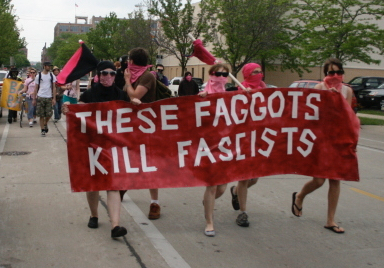
How did Bash Back Twin Cities emerge and what sort of things did you do?
I had been fangirling over Bash Back! nationally since the iconic Milwaukee Pridefest photo hit the internet in spring 2008 (Neo-Nazis has threatened to attack MKE Pridefest and BB MKE mobilized in response) but around the RNC I was rolling with people I knew well rather than with the BB! bloc. I went to the 2009 Radical Queer Convergence (organized by BB! Chicago) with some friends from school and ended up meeting some folks from Minneapolis there who were in the Avengers. When we got back I started to go to Avengers meetings and Trans March planning meetings and shortly thereafter about 5 or 6 of us formed BB! TC. A few folks came and went over the year that we existed, but it was always a pretty small core group with others occasionally coming to actions with us when invited.
We met weekly and engaged in a variety of activities in the name of Bash Back! Twin Cities. We disrupted an Human Rights Campaign gala and had a fake mass wedding professing our vows to queer insurrection and unicorns and cupcakes, we confronted Neo-Nazis (which unfortunately lead to some arrests but also Nazi uniforms covered in glitter and glue), we threw leaflets and glitter around the Mall of America and had a dance party on the light rail, we vandalized some military recruitment centers and a reserve base in response to mounting pressure to repeal Don’t Ask Don’t Tell, we called for a black bloc in the local march in response to the troop surge, we showed up and disrupted assimilationist marches for Marriage Equality, and there were probably a few other actions I am forgetting given how much time has passed.
Pride is coming up—what was Bash Back’s analysis of Pride events and their history?
Well nationally, BB! engaged with Pride in different ways. The first BB! action that I was aware of was BB! Milwaukee marching at MKE Pride with a banner that said “These Faggots Kill Fascists” and some thick wooden flag poles that looked like they could do some damage if Nazis decided to follow through on their threats to attack. In Chicago, BB! folks marched in the Dyke March with banners saying “Bash Back against Gentrification” and “No Pride in Corporate Greed.” I think Memphis did a banner drop along the Pride parade route. Somewhere out east a Pink and Black bloc snuck into the official parade, uninvited of course. I’m not sure what all other chapters did.
Locally our last action that we never wrote any communique for revolved around Pride. We snuck into Loring Park the night before Pride weekend and wheat-pasted anti-assimilationist propaganda in the Port-a-Potties. That part of the action was successful. But then we also tried to stop the Pride Parade on Sunday with a physical barrier and that failed miserably for multiple reasons. Logistically we did not plan well. We realized when we got there and found a spot that we didn’t have a way to lock the chain or whatever it was on each side of the street, so someone had to make a quick trip to the hardware store. The plan was right before the parade got to where we were we would lock the chain to one side of the street, run across and then lock it to something on the other side of the street as well, and then run away. It didn’t work, but also we didn’t put any thought into how to engage the people around us who were there to watch the parade and who figured out what we were trying to do and intervened to stop us (which we also didn’t anticipate) and had no idea why we were doing it. We needed more people to block for those doing the locking and running across and we needed others distributing leaflets and chanting and whatnot so that people knew why we were trying to block the parade. I am generally into not having slogans and whatnot but it wasn’t the right approach in this situation as there was a built-in audience for the action and it wasn’t obvious to them at all why we were against the Pride parade. I mean hopefully we looked queer enough not to be taken as homophobes but honestly I don’t know. I think to many of the spectators that was the only plausible reason some kids would try to stop the parade. So yeah that was particularly unfortunate that that was the last thing we did as BB! TC and it was not a high note for us. But that was how we engaged with Pride. Does that answer your question?
I mean, obviously we rejected the corporate, assimilationist, whitewashed festival of recuperation that Pride has become and did not want people to be able to forget the history of rioting and radical transwomen of color that the mainstream GLBT movement appropriates and yet sweeps under the rug.
It seems like one important theoretical contribution of Bash Back was to approach queerness not as another identity category to be enshrined within modern multiculturalism but as a tension or antagonism that leads us in the direction of a frontal assault on the mechanisms which produce us as gendered subjects. How did this approach play out in the work/actions taking place under the Bash Back mantle?
Well someone has been reading their Baedan! With that question I think you’ve hit on one of the tensions that lead to the early demise of Bash Back! both nationally and locally. Yes we were against assimilation, but we were not the first to take up that position. We were also not the first to theorize queer as a destabilizing anti-identity – the refusal of a fixed identity. Queer theorists deserve that credit, but we took queer theory out of academia and developed its implications in the streets. We became that destabilizing force. We wanted to be that force that social conservatives fear will destroy the family and by extension the nation. We were Bashing Back against everything that was hostile to our existence. Overall Bash Back! was antagonistic toward society at large – toward the mainstream GLBT movement, toward the state, the church, the family, capitalism…it fundamentally had an antisocial character and was against the institutions that produce us as subjects, certainly including as gendered and sexualized subjects. Through our words, aesthetics, and deeds, we constituted a queer force of desire and negation. This force encountered gender in a number of ways, from people choosing ridiculous and ever changing preferred gender pronouns (like food items) to genderfucking attire in blocs to disrupting pro-marriage marches and galas to vandalism of churches.
But the tension I think your question leads us to was the contradiction in mobilizing around an identity that is meant to be an anti-identity. We were critical of identity politics and yet at times we were engaging in identity politics, whether we wanted to admit it or not. If identity it is a trap then was Bash Back! not also a trap of our own making? And really this was one of the fundamental tensions in Bash Back!; people related differently to identity politics. Those who came from anarchist scenes tended to be critical of identity politics, while those who came from queer scenes tended to be less so, more like the militant wing of identity politics.
Anyway locally we met again after Bash Back! had officially dissolved to talk about where to go from there. I wanted to continue on as an affinity group and just expand the scope of what we were doing to things that weren’t specifically queer and invite in friends who were not queer. So basically just morph into an informal anarchist crew, but certainly it would retain more of a queer and feminist character than most anarchist crews and scenes. But no one else in BB! TC was down with that and others wanted to focus on bringing radical politics to the queer scene, which didn’t appeal to me. So I was the odd one out. I’m not actually sure to what extent the others went on to do that, either as a group or as individuals.
Before we move on though, there’s a bit more to say about this. Something that came up then but had also come up previously in BB! Twin Cities was that the other folks didn’t feel comfortable in the local anarchist scene. They felt too queer for cis, straight anarchists. I actually felt more comfortable in the anarchist scene than I did in the queer scene. [2] I didn’t feel like the right kind of queer for the queer scene and felt pressure to perform queerness in a way that didn’t feel genuine to me. And so much of it seemed to revolve around parties which didn’t appeal to me because I’m boring and introverted. But the reason I bring this up is that anarchists should be thinking about how queer friendly our scenes are or aren’t. For an example, we ended up working with members of the IWW and punks around antifa activities and I specifically had conversations with Wobblies about doing preferred pronouns during meeting introductions but they didn’t want to because they thought it would alienate the proles or whatever, which I actually think is bullshit. And if you make that choice, you are choosing to alienate queer folks who will otherwise be misgendered at your meetings out of fear of potentially alienating others who you are patronizing. And a couple times we went toe to toe with Neo-Nazis there were punks we had to call out for calling the Nazis pussies and faggots. That kind of bullshit limits who wants to continue to engage in antifa activities. That is something people should be intentional about as antifa makes an upswing in the Trump era.

Bash Back! was overall an insurrectionary project, how did that tendency interact Bash Back’s existence as an semi-organized network?
Yes I would say Bash Back! was an insurrectionary project. It is was conflictual and it did generalize in the sense of quickly spreading around North America. There was definitely an emphasis on attack and experimentation. In the decade or so that I have been an anarchist, the timeframe that Bach Back! was active also seems to me to have been the high point of insurrectionary anarchism in the US, at least in the Midwest but also more generally. I think Bash Back! was a notable part of that. We both influenced and were influenced by developments in that tendency around us.
As far as the question of organization, I mean yes there was a name and local groups calling themselves “chapters” but BB! was a network, not an organization. There was little to no coordination between chapters and chapters were more like local affinity groups or crews. However, Bash Back! locally and nationally dipped its toes both in above ground public organizing and in more clandestine activities, and that was probably ill-advised. It was just formal and public enough to be sued by a conservative group and for individual members to be subpoenaed for being known to be affiliated with Bash Back! Locally, we claimed most of our activities as Bash Back! Twin Cities and then for our glamdalism activities we wrote communiques signed “an autonomous cell of Bash Back!” or something like that as if we were not the same people in BB! TC but I don’t think we were fooling anyone. In a perfect world, those engaged in clandestine attacks would not also be doing anything resembling public organizing. At the very least, we shouldn’t have been using the name Bash Back! for both kinds of activities.
But this question gets to one of the other factors that lead to BB!’s unravelling. It’s extremely loose structure and lack of coherence and coordination meant that there were a lot of different people engaging in a lot of different activities in the name of Bash Back! And that isn’t a problem if people are down with that kind of diversity in struggle. But if people feel ownership over a project and they want that project to line up with their personal persuasions, then that becomes a problem when they don’t align with everyone else who has joined the project. This never bothered me, but I think for some there wasn’t enough ideological and tactical coherence for everyone to be laying claim to the same name. Certainly people had different visions for what Bash Back! should be and how it should operate.
Some felt that Bash Back! was becoming too much of an activist organization whereas it was intended to be a network for queer folks in anarchist scenes, and it had already fulfilled its original function of mobilizing for mass actions like DNC/RNC and G20. I myself am highly critical of formal organizations and am very much wary of organizations existing to exist rather than for a specific purpose. But I didn’t feel at that time that that criticism was apt for Bash Back! as a network. I felt like it was still inspiring a lot of interesting experimentation that wouldn’t be happening otherwise, or at least there would be less of it. It is a shame that having a name and some kind of vague structure spurs activity, but it seems to be true. But the question remains as to whether or not that activity is worthwhile. Overall I felt it was, but obviously others did not. [3]
While Bash Back ended rather quickly, how would you describe its long-term impact? What are lessons you drew from Bash Back that you carry with you today?
Well considering you mentioned that some of the Nightfall collective was unfamiliar with Bash Back!, I guess there isn’t much of a long-term impact, at least on the local anarchist scene. I don’t know but I would guess that is the case elsewhere as well. Anarchist scenes tend to have pitifully short life cycles. That’s why conversations like this are so important.
As far as the impact of Bash Back! on radical queer politics, I don’t really know as I haven’t engaged with those scenes locally or nationally since Bash Back! But I do think the recent attacks on the “#FreeSpeechBus” [4] are very much in the vein of the Bash Back! tendency. It’s interesting – there are radical queers who appropriate the violent, raucous queer history (and often whitewash it), but condemn queer violence and property destruction in the present. That was true in the era of Bash Back! and I’m sure there are still people like that today, but looking online I didn’t see anyone at all criticizing the attacks, insisting on non-violence. I’d like to think that perhaps Bash Back! helped to carve out space for queer militance in the 21st century.
There was another example given in the journal Hostis 2, where someone was recounting a mob responding to the recent murder of a local trans woman by setting fire to the house of the murderer, and young observers believing it to be the work of Bash Back! Something to that effect anyway, I might be remembering the details wrong. The point is, they weren’t entirely wrong. Like yes, that was the ghost of Bash Back!, literally made of some former Bash Backers! and I’m sure others who were never a part of BB! as a network but are a part of that tendency, perhaps consciously so, perhaps not.
Another example might be the sabotage of a bakery in Bloomington as vengeance for Feral Pines. The owners of the bakery had taken advantage of her as a trans woman who couldn’t easily find another job due to employment discrimination. And I’m sure there are other examples that I don’t know about, that do not have communiques that circulate nationally and are not recounted in journals. The spirit of Bash Back! never died, it just lost a corporeal form. But I do think it having had that form, even briefly, helped it spread immensely, growing the material force of queer insurrection and allowing it to cast a bigger shadow in life (i.e. have a larger effect both on anarchism in Turtle Island and on queer scenes) and birth a fierce ghost in death.
As far as lessons from Bash Back! that I take with me today… I feel like I am supposed to say something really profound here and I’m going to let us all down. But I will say that one of the things I most appreciated about Bash Back! was that we managed to be fierce yet simultaneously campy, satirical, and fun. We didn’t take ourselves too seriously and I think that anarchists at large could learn from that, both locally and nationally.
To give you some examples, there was a communique written on behalf of a whale at Sea World that killed it’s trainer and signed Splash Back! or some shit like that, there was a communique written about recruiting the rapper Soulja Boy Tell ’em, there was a satirical piece written in favor of the repeal of Don’t Ask Don’t Tell about how we would bring down the military from the inside, there was an essay called “How is it to be done in the Ass?,” Ariel Attack was doing these glamorous photoshoots posing with broken glass for her court dates and her fundraiser shirts were her silhouette in glitter with a hammer and said “It’s Hammer Time.” [5] Locally, we wrote many of our communiques in the style of silly diary entries, we wrote a call-out for a black bloc by referencing Justin Timberlake and the song “Bringing Sexy Back” and included a picture of JT with a badly photoshopped black bandanna on. We disrupted an HRC gala in campy wedding attire and recited vows about queer insurrection and unicorns and rainbows and cupcakes. We wrote ridiculous innuendo-filled love letters that we posted online satirizing Dan Dimaggio, a local straight cis white man who was a paid organizer for Socialist Alternative who formed and lead this GLBT front group that was trying to capitalize on the push for gay marriage. We fucking had fun when we could. I think it’s ridiculous that anarchists write communiques like a banner drop is going to bring the revolution or that a brief, uneventful 8 person march made the halls of power shake in their boots or whatever. Anarchism would be more approachable if we didn’t take ourselves so seriously and seem so delusional about ourselves and our impact. And maybe more people would be inclined to participate if we were actually fun. I do think Bash Back!’s sense of humor and campy qualities may have been part of why it didn’t quite get the respect it deserved from straight anarchists.
There’s another related, but more broad lesson that I take with me as well. That is grounding ourselves and our own needs in the projects that we undertake. I mean this in a few ways. 1) We weren’t about that activist self-sacrifice. And again that’s part of where having fun and following your desires comes into the picture. 2) There didn’t seem to be this focus on building toward the revolution or insurrection or whatever that seems to characterize North American anarchism. What we were doing was about the here and now, about our desires and needs. It had value in and of itself for ourselves and that’s why we were doing it. This world is terrible and it isn’t going to get better, we have to fight for room for ourselves to live the lives we desire (or at least the closest thing to the lives that we want as we can in this shithole). Take care of yourselves and your friends, do things that have meaning in and of themselves, be fierce and have fun. Give ’em hell, not to save someone else or for the fucking children, but because you want to. I think those are some lessons from Bash Back!
Any last thoughts you’d like to share?
Well the main thing people should know about Bash Back! Twin Cities was that we shat on the movements of the oppressed and dabbled in insurrection on the weekends. That was what a local Trotskyist accused us of on the internet back then and I wanted to get that in the interview somewhere.
I was telling a younger co-worker about Bash Back! when she was trying to recruit me for an action to disrupt the Pride Parade last year and she asked me how intersectional Bash Back! was in practice. I would say both locally and nationally we had an intersectional analysis and this was reflected in various communiques and actions, but that as with the anarchist scene at large, it was a predominantly white space. Bash Back! Chicago was probably the most diverse chapter, but unfortunately it didn’t survive the 2009 Radical Queer convergence. I don’t know how much I want to go into that here, but I kind of figured I wouldn’t make it through this interview without recounting that in some fashion.
I think the biggest misstep on the part of BB! Chicago with regards to that convergence was making it this wide open thing and inviting “all radical queers” instead of just making it a Bash Back! convergence that was for people who were either already involved with Bash Back! or who wanted to be or at minimum for people who agreed to the points of unity. Instead they had more people coming than they actually had the capacity to host and we didn’t actually have enough in common to make the convergence productive and instead it just turned into a mess.
Anyway the big controversy of that convergence was that there was an event that was advertised as a queer dance party on the train Saturday night that turned into a stroll through Boystown. [6] There were several controversies around this event. One was that some (white) people (patronizingly) felt it was inappropriate to have this dance party on a train with mostly working class POC riders. Another controversy was that as the dance party turned into a prole stroll in which folks were masking up, some felt that people were lured into a riot that they didn’t see coming, believing the stroll to be a planned event rather than a spontaneous action developing out of the train party. [7] Some (white) people were (patronizingly) upset that this development put POC participants at greater risk than they theoretically expected. Obviously people can decide for themselves if an action is one they want to participate in and how they want to participate (like walking on the sidewalk) and can speak for themselves.
As the police closed in from behind folks moved a newspaper box and a trash can into the street to block them, but others moved them back and yelled “No!” and “This is nonviolent!” and shit like that. Well the police didn’t get the memo about nonviolence and hit people with their cars and ran over someone’s foot and got out and attacked people with batons and asps and while some arrests were thwarted, they did successfully capture 4 folks that night. They specifically seemed to target gender non-conforming folks.
The next day there was a lengthy debrief sort of thing, and then of course the fallout continued after that weekend via the internet. There were a lot of white folks deploying ally politics in a way that I’m sure we’re all familiar with: speaking for others as a monolithic group, assuming that militance and violence are white impositions and that people of color lack agency and cannot make decisions, take initiative or speak for themselves. So yeah, some of the people of color in BB! Chicago understandably got frustrated with what they termed a white liberal takeover of Bash Back! I think it was less a white liberal takeover of Bash Back! itself so much as the result of inviting “all radical queers” to the convergence because a lot of white liberals identify as radical queers, and not in the way that Bash Back! meant that term. But anyway, BB! Chicago disbanded soon after that.
If folks want to know more about Bash Back! nationally and want to read the texts that were circulating at the time they should check out the book Queer Ultraviolence. I think the theoretical implications of Bash Back! are best addressed in the main essay in Baedan 1 which can be found for free on the anarchist library. All of the issues of Baedan are fantastic and should be of interest to anyone who enjoyed this interview.
Endnotes:
-
-
-
-
-
-
-

